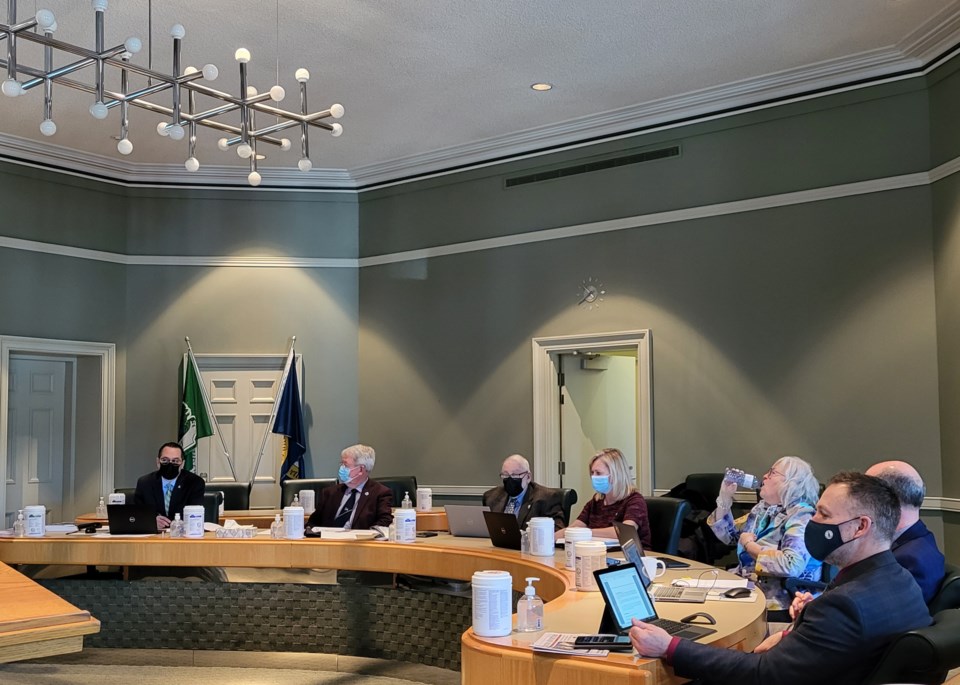The county planning committee has approved, in principle, a revised Official Plan forecast that calls for an additional 20,000 people and 9,000 jobs in the county between 2041 and 2051.
The first in-person county planning committee meeting since the Dec. 20, 2021 COVID-19 restrictions was held on Thursday. The committee approved the idea at its meeting Thursday but did not official approved the report.
Sarah Wilhelm, county’s manager of policy planning, presented to council the revised Official Plan growth forecast and allocations. The revision includes the increase in growth due to the additional 10-year forecast from 2041 to 2051.
In Wilhelm’s report, it states that the revised growth plan forecast for the county anticipates a minimum of 160,000 people and 70,000 jobs by 2051, which represents an increase of 20,000 people and 9,000 jobs from the 2041 forecasts in the current growth plan.
The province approved an amendment that extends the horizon of the growth plan for the greater golden horseshoe to 2051 back in 2020. County planning staff recently finished the numbers and the revision to the county’s official plan.
“The report before you is being brought to you for three main reasons – to share the results of the final version of the growth forecast and allocations; to give you an overview of the comments we’ve received; and to ultimately seek approval in principle of the technical report that force the foundation of those forecasts and allocations,” explained Wilhelm during the meeting.
She noted that the province’s forecast is only the minimum number of growth for municipalities, but the planning staff is not recommending a higher forecast. The majority of the population will migrate from Toronto and the GTHA to the county.
“So, about two-thirds of the population is forecasted to allocate to Centre Wellington and Erin,” said Wilhelm.
“For the remaining third, we’re seeing an increase in growth for northern municipalities and a decrease in growth for Guelph/Eramosa and Puslinch. Mapleton will stay the same in regards to growth for that additional 10 years of growth.”
From 2041 to 2051, Centre Wellington is expected to get an additional 5,900 people, 2,770 new household units, and 3,800 jobs. Erin is expected to have an additional 6,100 people, 1,920 new housing units, and 920 jobs.
As for Minto, the town is expected to have 1,800 people, 640 housing units, and 980 jobs from 2041 to 2051. Wellington North will have 2,800 people, 960 houses, and 1,050 new jobs.
The county’s forecast adds about 730 new households per year within the additional 10 years, except for Guelph/Eramosa and Puslinch. Meanwhile, the employment rate will grow steadily.
However, Watson and Associates Economists Ltd. has cautioned that the county needs to ensure the economic growth isn’t constrained by future labour shortages.
“A lot of questions came up from local councillors and residents. I think the key question that was asked was why can’t we just say no. A lot of people aren’t comfortable with the amount of people forecasted to come to the county,” said Wilhelm.
“In response to that, simply put, the province tells the county what growth we will get. Lower forecasts are not permitted as the province has changed their approach.
Warden Kelly Linton noted the numbers are being driven at a provincial level and the county has to fit in those numbers as a responsible level of government.
“A lot of people will be interested in these numbers; some won’t be happy with the growth rate in some areas but people have to live somewhere. There’s a feeling that we’re being forced to grow but the reality is people want to move to Wellington County. It’s no surprise as we have great amenities and great downtowns,” said Linton.
The draft of the phase 2 report is anticipated to be finished in the coming weeks and will be circulated for comments to municipalities, Indigenous communities, agencies, stakeholders, and the public.
